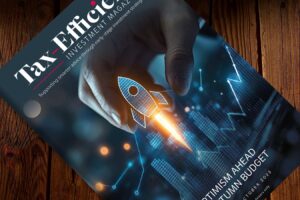IFAM: How does the team approach work within the fund?
AA: I work within the income team at M&G. Our approach dictates that we be less focused on the absolute yield, with the emphasis is on the growth in the income stream. We have a number of fund managers who have wide experience in this style of investing and in this strategy. This also came out of the fact that our Global Dividend Fund has more than 11 years of history investing in these types of businesses from the outset. So we know what to look for and what is attractive in these types of business. In fact, there are a small number of overlapping holdings across the four strategies run by the income team. Looking more closely at the Global Listed Infrastructure fund however, I have a dedicated analyst on the strategy. Also, we have a deeper analyst team that covers companies on a sector by sector basis that we draw from and other embedded analysts in the team looking at these businesses too. We also interact quite closely with our private infrastructure group; interactions which are incredibly useful for sharing observations on the asset class, transactions and valuations on transactions etc. We also work with the credit analysts from the fixed income team and collaborate on the businesses we’re invested in. Overall, we feel incredibly well resourced in covering this asset class.
When it comes to interaction with our ESG team here, we have regular meetings and ongoing dialogue with the group. They also assess our portfolios regularly, looking for existing or potential controversies, as well as each company’s direction of travel. Often when we meet with companies, members of our ESG team will join us at the meetings to more deeply engage with the management so that the working relationship is very close. Within our ESG process one thing we don’t do is to take third party rankings and ratings of businesses as a given. We do our own work from an ESG standpoint and we make sure that we are accountable for every holding. We don’t use a negative screening process either as we don’t believe it fully assesses the prospects for a business as it is quite prone to error. However, we do use third party providers as a source, as an input in the same way that we use research analysts who cover our companies. Ultimately though, we do the work ourselves.
IFAM: Is it a constraint having twin objectives of delivering capital growth as well as an increasing income? Where does the emphasis lie?
AA: This is an important question as it’s a both an academic and an ideological one. In fact, we resolutely believe that income growth and capital growth work hand in hand. When we invest in a business, we won’t know how the market will value it over time but we can get a handle on its ability to grow its income stream. If it can do so progressively and sustainably – for example without having to borrow money to pay an increasing income stream – then we believe that capital markets will reward that income value by increasing the equity value of the business. So our ideal investment is a company which consistently grows its dividend over time but that its dividend yield overall doesn’t really change or perhaps even declines – as a result of the capital value adjusting for the value of the sustainability of that income growth. We strongly believe that capital growth and increasing income absolutely are inextricably linked.
IFAM: How do you manage risk in the portfolio and ensure that there is effective diversification for investors?
AA: There are two parts to this. The first one is in the way that we established and built the strategy in the first place. Secondly, there’s the way that risk is monitored and addressed on an ongoing basis in co-operation with our risk team.
So on the first point, we talked earlier about the three broad categories of listed infrastructure and each of the sub categories within those. When we built the framework for allocations to each category and sub-category, this was done following a rigorous assessment of the volatility versus return trade off of the underlying companies in the investible universe of each category. So we built a framework and allocation range to cover these which is embedded in the process.
Broadly speaking, economic infrastructure is between two thirds and three quarters of total exposure, social infrastructure is between 10% and 20% and evolving infrastructure between 15% and 25%. These ranges were established to minimise risk and maximise return. The position size, weighting target etc. build up to that. Finally, there’s the regional element of diversifying via a global strategy and making sure that we have a mix of business and regulatory risk – as many of the businesses have some form of regulatory oversight whether it is moderate or comprehensive.
IFAM: Looking ahead, where to do you see the most attractive investment opportunities within the sector?
AA: I must admit that I’m very excited about all the opportunities we have right across the portfolio and that we have confidence in each of our holdings across all of the categories. That said, from time to time, the market throws up wonderful opportunities. At the moment, I see particular opportunities in energy infrastructure. The market can become concerned in the short term about the industry and sector, which creates buying opportunities which we can capitalise upon. We’ve been steadily increasing our allocation here and now have five holdings which amount to roughly 16% of the portfolio overall. The other area where we see particular ongoing opportunity is in transportation infrastructure where there is significant upside for capital investment for the companies underlying the exposure. Ultimately, this makes for strong return potential and for a growing income stream from these projects. We’ve been adding exposure here too. Finally, the structural growth which is inherent in communications infrastructure keeps us excited about this component of the strategy. We are getting very high rates of growth in cashflow streams from businesses associated with the digital economy which is increasingly pervading our lives. The investment case is compelling.
Continue reading article…












